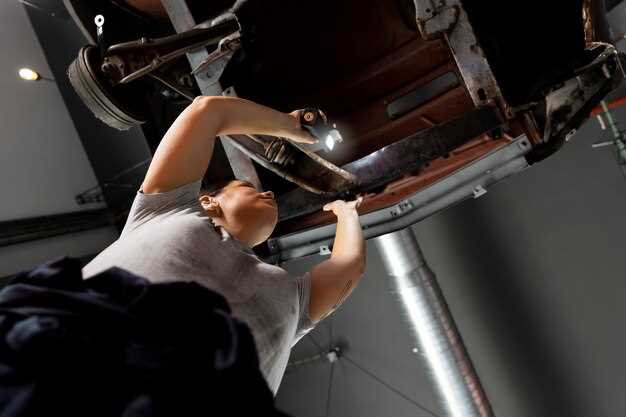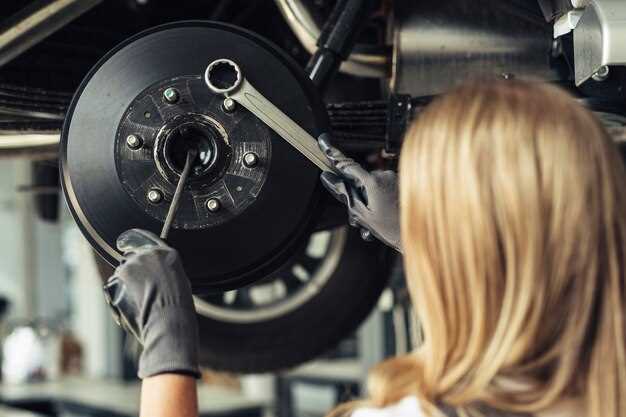
Achieving optimal performance in drag racing hinges significantly on effective suspension setups. The first 60 feet of a race can set the tone for the entire run, where traction and stability play crucial roles. To maximize your launch, it’s essential to focus on the nuances of suspension tuning, which can drastically affect a car’s ability to transfer weight and grip the track.
A well-tuned suspension system not only enhances acceleration but also improves the overall handling of a vehicle during sudden launches. This article delves into various suspension configurations, highlighting how specific setups can lead to faster 60-foot times. From adjusting spring rates to optimizing shock damping, understanding these elements is vital for any racer looking to shave off precious milliseconds from their runs.
We’ll explore popular setups, such as the use of anti-roll bars, multi-link systems, and even air suspension technologies, showcasing how each contributes uniquely to a car’s performance. By the end, you’ll gain insights into the best practices for achieving a launch that maximizes grip and minimizes wheel spin, proving that the right suspension tuning is a game-changer on the drag strip.
Choosing the Right Spring Rates for Maximum Traction
When it comes to achieving optimal 60-foot times, selecting the correct spring rates is crucial for maximizing traction. The spring rates affect how the suspension responds to weight transfer during acceleration, which can greatly influence traction levels on the strip.
Tuning your suspension starts with understanding the weight distribution of your vehicle. Heavier cars may require stiffer spring rates to prevent excessive squatting, while lighter vehicles can benefit from softer springs that allow for better weight transfer to the rear tires. A well-balanced setup ensures that the rear wheels grip the track effectively at launch.
Moreover, the interaction between spring rates and shock absorbers cannot be overlooked. Stiff springs may require equally stiff dampers to prevent harsh bottoming out, whereas softer springs paired with adjustable shocks can allow for fine-tuning of the setup based on track conditions. The goal is to maintain optimal contact with the pavement, providing consistent traction through the critical 60-foot mark.
Consider experimenting with different spring rates to find the sweet spot for your specific setup. Adjustments can be made incrementally until the desired traction level is achieved. Keep in mind that other factors, such as tire compound and suspension geometry, will also play significant roles in your overall performance. By focusing on the right spring rates in conjunction with a comprehensive tuning approach, you can enhance your vehicle’s launch capabilities and lower those 60-foot times effectively.
Tuning Shock Absorbers for Optimal Weight Transfer

Tuning shock absorbers is a critical component in achieving optimal weight transfer during acceleration, especially for achieving fast 60-foot times. The primary goal is to manage how weight shifts from the front to the rear wheels when launching the vehicle. This process ensures that maximum traction is achieved, allowing for quicker starts and better control.
The first step in tuning shock absorbers involves adjusting the compression and rebound settings. Compression tuning controls how quickly the shock absorbs bumps during weight transfer, while rebound tuning affects how quickly the shock returns to its original position. A softer compression setting helps in allowing weight to transfer to the rear tires quickly, enhancing grip. Conversely, a firmer rebound setting helps maintain stability and prevents excessive body roll.
Next, consider the overall damping characteristics of the shock absorbers. A well-balanced damping setup provides the necessary support while still allowing enough travel to facilitate weight shift. Too stiff a configuration can hinder weight transfer, resulting in wheel spin, whereas an overly soft setup can lead to instability and unwanted body movement.
Moreover, the spring rates used in conjunction with shock tuning are equally important. Progressive springs offer a more forgiving ride and enhance weight transfer during launches, while linear springs provide consistent resistance throughout their travel. The choice between these types will depend on the specific track conditions and the desired performance characteristics.
Finally, testing and fine-tuning the shock absorber settings is essential. Conducting a series of test launches enables you to analyze the vehicle’s behavior during weight transfer. Making incremental adjustments based on feedback allows for precision tuning, ultimately leading to improved 60-foot times and overall performance.
Adjusting Ride Height to Enhance Launch Performance

Optimizing ride height is a critical aspect of tuning a vehicle for achieving fast 60-foot times. The primary objective is to strike a balance between traction and weight transfer during launch. A lower ride height can enhance aerodynamics and lower the center of gravity, which helps reduce body roll and improve stability during acceleration.
However, excessively low ride height may lead to increased risk of bottoming out or losing essential suspension travel. This can negatively impact traction and ultimately compromise the vehicle’s ability to achieve quick 60-foot times. A well-calibrated suspension setup allows for the maximum transfer of weight to the rear wheels, increasing grip and improving launch performance.
Adjusting ride height involves considering the overall stance of the vehicle. Raising the front end slightly can promote better weight distribution during launch. This elevation allows the rear suspension to squat more effectively, generating additional load on the tires. It’s important to analyze the balance between front and rear heights to ensure an optimal launch angle, preventing unwanted wheel hop or spin.
Incorporating adjustable coilovers or air suspension systems can provide the ability to fine-tune ride height according to specific conditions, such as track surface and weather. Familiarizing oneself with these adjustments and testing different heights during practice runs can lead to discovering the ideal setup that contributes significantly to improved 60-foot performance.
In conclusion, proper adjustment of ride height is essential for optimizing launch performance. By carefully tuning the vehicle’s stance and suspension dynamics, enthusiasts can achieve faster 60-foot times, enhancing overall racing capabilities.



